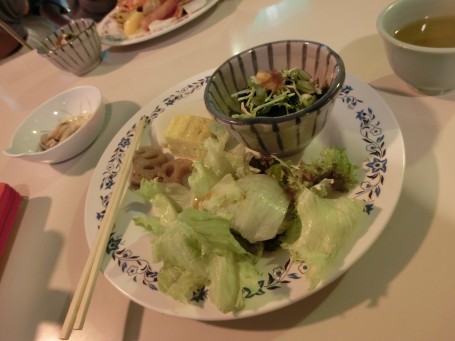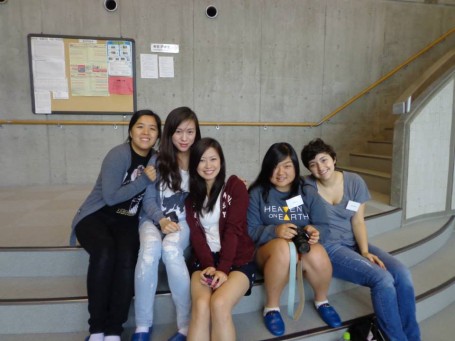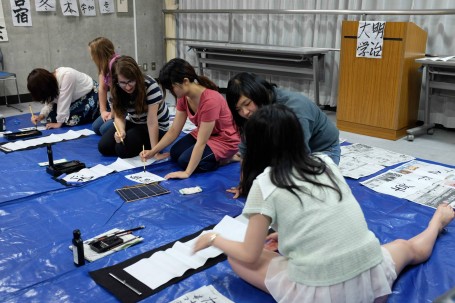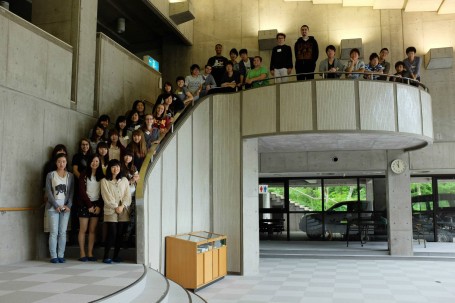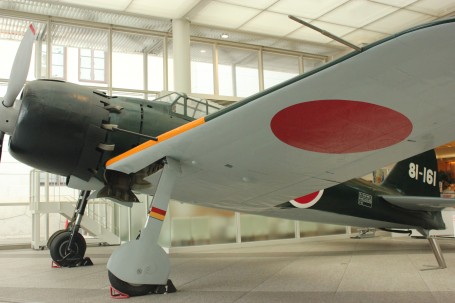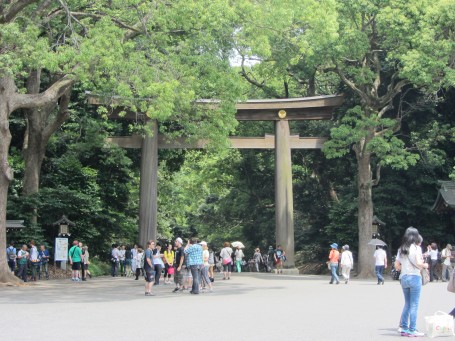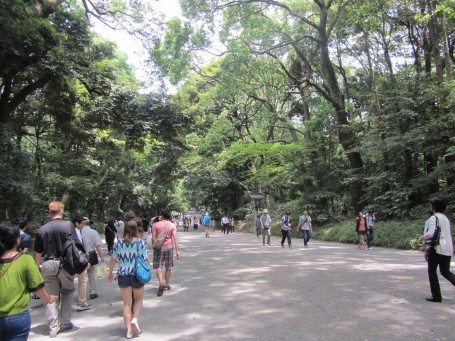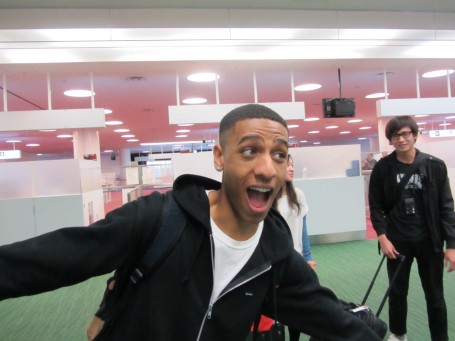By Sally Fu
(This is Part 2 of a two-post series on our trip to the Yamanaka Lake Seminar House)
Day 3: The drizzling rain softly woke us from our slumber. Last night was a festive and insightful night at the Yamanaka Lake Seminar House. Not only did the USC students bond with the Meiji students through various activities such as Japanese calligraphy (shodou) and karaoke, but the past few days allowed for much cultural exchange, as we all stayed together in a Japanese-style retreat at the base of Mt. Fuji.
While the night was fun, the lack of a curfew ended up hindering many students from eating their breakfast. When I arrived at the cafeteria around eight or so, only a couple of students were there, which meant I could allow myself to devour more food. After eating, we all returned to our rooms to pack up our things. Even though the director of the Yamanaka Lake trip, Tom Power, had asked the students to simply fold the futons, my Meiji roommates also wiped off the table and sink in our room to restore it to the original condition in which we found it.
After breakfast and packing up, the Meiji and USC students joined together for a discussion session. The session involved topics such as improving cultural exchange and the differences between Japan and the U.S. The Professor divided us into groups, and our group discussed how much more efficient and conservative Japan is compared to other countries such as the U.S. One thing that really shocked me after coming to Japan is the way people always finish their food; they leave nothing behind on their plates. In the U.S., I’m used to taking my unfinished meals to go, but Japan does not really offer such a service, and so everyone usually finishes all of the food they ordered at that one sitting at the restaurant. Furthermore, navigating the intricate subway system not only provides a great opportunity to exercise, but it is also inexpensive and very efficient. Our group also discussed how people should step out of their comfort zone to allow for greater cultural exchange. The discussion also broke down common stereotypes held between the USC and Meiji students. For example, we found out the Japanese do not eat sushi or sashimi every day, and they discovered that Americans do not eat hamburgers every day, either.
Before departure, our instructors took many photographs as if we were magazine models. We tried various poses and locations, but the instructors were not alone in wanting to preserve such precious memories; I also hoped to obtain an eternal memory of this wonderful experience.

